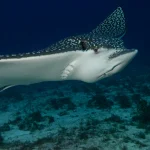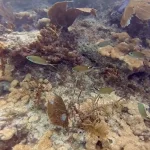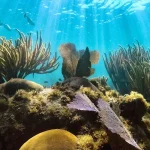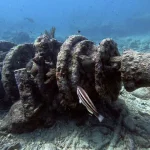Table of Contents
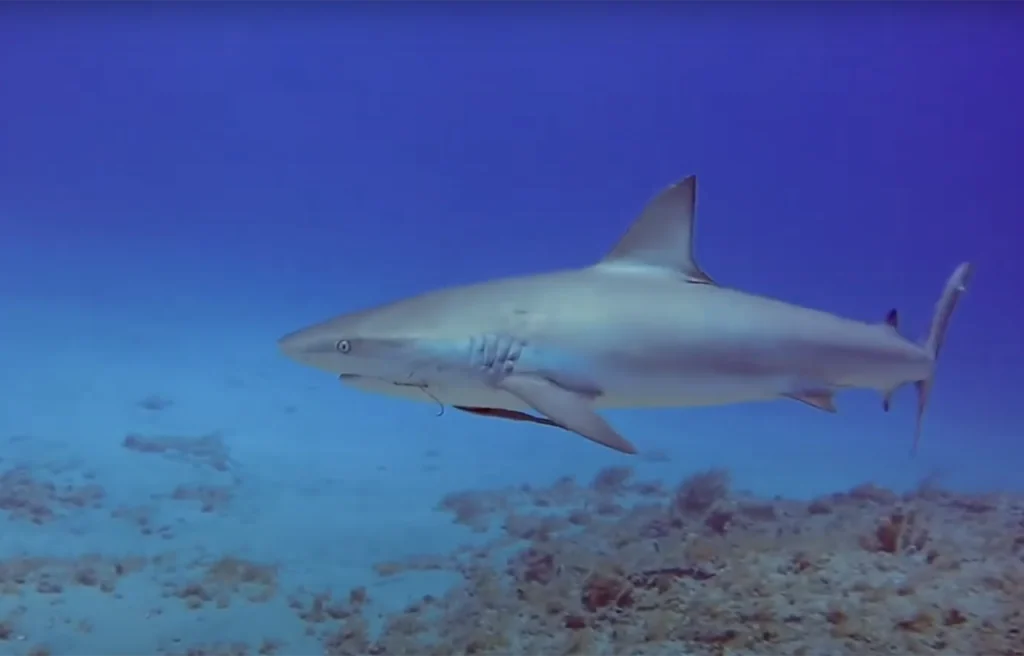
Diving at Tunnels promises an unforgettable experience filled with encounters with both large and small marine life, making it a must-visit location for divers exploring Jupiter’s underwater world.
Article at a Glance
- Location: The Tunnels dive site is situated near Jupiter Inlet, Florida, known for its rich marine biodiversity and unique underwater features.
- Depth: Dives typically range from 65 to 76 feet (20 to 23 meters), making it suitable for both beginner and advanced divers, depending on their comfort level.
- Visibility: Divers can expect visibility ranging from 10 to 25 meters (30 to 80 feet), which can vary based on tides, currents, and weather conditions.
- Best Time to Dive: The optimal diving period is from mid-August to September, coinciding with the Goliath grouper aggregation, offering exciting encounters with these large fish.
- Key Features: Notable aspects of the site include swim-through tunnels, ledges, and the “Donut” area where Caribbean reef sharks are frequently spotted.
- Marine Life: The site is home to diverse species such as Goliath groupers, Caribbean reef sharks, southern stingrays, turtles, and various reef fish.
- Photography Opportunities: Ideal for underwater photography enthusiasts, with recommendations for using wide-angle lenses and proper lighting techniques to capture stunning images of marine life.
The Tunnels Jupiter Florida
The Tunnels dive site, located near Jupiter Inlet, is renowned for its exceptional underwater experiences and diverse marine life. It is often described as a “mecca” for scuba diving enthusiasts, offering encounters with a variety of aquatic species such as reef sharks, Goliath groupers, and southern stingrays.
The site features a unique swim-through tunnel that divers can explore, enhancing the overall diving experience
.Diving Conditions and Experience
Diving at Tunnels can be influenced by factors such as tide and current, which may affect visibility. The dive typically occurs at depths ranging from 55 to 75 feet. Divers are encouraged to be patient and observant to fully appreciate the marine life that congregates in this area. Notably, the site includes a section known as “the Donut,” where Caribbean reef sharks are frequently sighted.
What Marine Life Can I Expect To See?
Goliath Groupers
- These massive fish are a highlight of the Tunnels dive site. Goliath groupers can grow up to 7 feet long and weigh over 450 pounds. They are often seen in large aggregations during their spawning season from August to October, with divers frequently encountering 40 to 60 individuals in a single dive.
Sharks
- The site is known for its frequent sightings of various shark species, including:
- Caribbean Reef Sharks: Commonly observed circling the area, especially near a section known as “the Donut” where they gather in large numbers.
- Tiger Sharks and Hammerhead Sharks: Occasionally spotted, adding excitement to the dive experience.
Rays
- Southern Stingrays: Often glide over the sandy bottom near the ledge, providing an enchanting sight for divers.
- Eagle Rays: These graceful creatures are also seen in the area, contributing to the diversity of marine life1.
Turtles
- Loggerhead and Green Sea Turtles are commonly encountered as they swim through the waters or rest on the reef.
Other Fish Species
- The Tunnels site is home to a variety of reef fish, including:
- Moray Eels: Green morays are frequently spotted hiding among the rocks and ledges.
- Octopi: These fascinating creatures can sometimes be seen camouflaged against the reef.
- Batfish: Known for their unusual appearance, these fish add an element of surprise to dives.
Unique Features
- The underwater landscape includes swim-through tunnels and ledges that provide excellent opportunities for exploration and observation of marine life in their natural habitat. Patience is key; divers who take their time often enjoy close encounters with larger species.
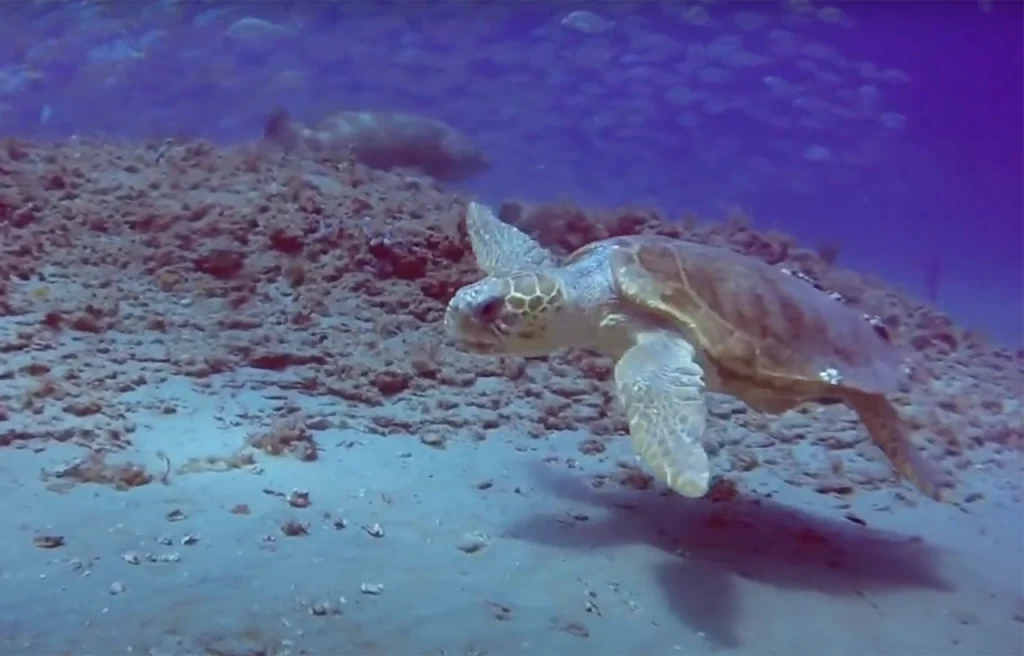
What Do Divers Say About This Site?
Abundant Marine Life
- Many divers emphasize the diversity of marine species encountered at Tunnels. Reports often mention sightings of Goliath groupers, reef sharks, and various types of rays. One diver noted seeing several resident Goliath groupers and a large nurse shark during their dive, reinforcing the site’s reputation for large aquatic encounters.
Unique Dive Features
- The swim-through tunnel is a standout feature that divers appreciate. One diver described it as an “absolutely amazing” part of the dive, where they encountered various marine life, including a Goliath grouper and a school of fish. The tunnel adds an element of adventure and exploration to the dive experience.
Conditions and Visibility
- Divers have reported varying conditions at Tunnels, with visibility ranging from 10 to 70 feet depending on the day. While some dives experienced less-than-ideal visibility, others enjoyed clear waters, which significantly enhanced the experience. The importance of timing dives with favorable conditions is often mentioned, as currents and tides can affect visibility and overall enjoyment.
Dive Operators
- Feedback on dive operators like Jupiter Dive Center is generally positive, with many divers praising their professionalism and safety measures. Divers appreciate the attentive crew who assist with gear and ensure a smooth diving experience.Some divers have expressed satisfaction with the level of service provided, even in crowded conditions.
Personal Experiences
- Individual accounts reflect a mix of excitement and anticipation for future dives at Tunnels. One diver expressed eagerness to return after a successful outing, highlighting the thrill of encountering diverse marine life and the camaraderie fostered during dives.
Key Information
| Category | Details |
|---|---|
| Location | Jupiter, Florida |
| Depth Range | 65 to 76 feet (20 to 23 meters) |
| Visibility | Typically 10 to 25 meters (30 to 80 feet), varies with conditions |
| Best Time to Dive | Mid-August to September (Goliath grouper aggregation) |
| Suitability | Suitable for both beginners (with guidance) and advanced divers |
| Key Features | Swim-through tunnels, ledges, “Donut” area for shark sightings |
| Marine Life | Goliath groupers, Caribbean reef sharks, southern stingrays, turtles, moray eels |
| Current Conditions | Can be variable; best to dive during slack tide |
| Recommended Dive Operators | Jupiter Dive Center, Jupiter Scuba Diving, Kyalami Charters |
| Photography Opportunities | Excellent for underwater photography; wide-angle lenses recommended |
Highlights of Diving This Site?
Abundant Marine Life
- Divers frequently encounter a rich variety of marine species, including Goliath groupers, Caribbean reef sharks, and southern stingrays. The presence of large aquatic life is a significant draw for many divers, with reports of schools of Goliath groupers and multiple shark sightings during dives.
Unique Swim-Throughs
- The Tunnels dive site features distinctive swim-through tunnels that add an adventurous element to the dive. As divers navigate these passages, they often encounter curious marine life such as turtles and reef sharks, enhancing the thrill of exploration.
The “Donut” Area
- A notable section of the dive known as “the Donut” is famous for its congregation of Caribbean reef sharks. Divers describe witnessing these magnificent creatures swimming in and out of the area, creating an unforgettable spectacle.
Scenic Underwater Topography
- The underwater landscape includes ledges and sandy bottoms that provide diverse habitats for marine life. Although some divers note that the ledge may not be as visually striking as other sites, the life surrounding it compensates with rewarding encounters.
Ideal Conditions for Diving
- While conditions can vary due to tides and currents, many divers report excellent visibility at Tunnels, sometimes exceeding 100 feet. Timing dives to coincide with favorable conditions can lead to truly spectacular experiences.
Patient Diving Pays Off
- Divers emphasize the importance of patience during dives at Tunnels. Those who take their time to explore and observe often have the best encounters with marine life, as many creatures return to the area after initial disturbances from bubbles.
Positive Operator Experiences
- Dive operators in the area receive high praise for their professionalism and safety measures. Many divers appreciate the support provided by crews who ensure a smooth diving experience.
My Favorite Dive Computers
I have compared the 3 top diving computers for each category to help making the right choice easier:
Iconic Spots At This Site
The Swim-Through Tunnel
- This is the defining feature of the Tunnels dive site. As divers enter the tunnel, they are often greeted by a variety of marine life, including Goliath groupers, reef sharks, and schools of fish. The tunnel provides a thrilling experience as divers navigate through it while observing the vibrant aquatic ecosystem around them.
The Donut Hole
- Located towards the end of the dive, this area is famous for its congregation of Caribbean reef sharks. Divers describe witnessing these magnificent creatures swimming in and out of the “Donut,” creating an exhilarating sight reminiscent of a clown car with sharks emerging from it. It’s a must-see spot for those seeking close encounters with larger marine life.
The Amphitheatre
- This section is often highlighted as a prime location for divers to linger and observe marine life. The Amphitheatre is characterized by its unique topography and is known for sightings of Goliath groupers, grey reef sharks, and various smaller critters. Many divers report spending a significant portion of their dive here due to the abundance of marine activity.
Cove Area
- Just behind the swim-through tunnel lies a cove where divers can often find a family of Goliath groupers, along with other species like green moray eels. This area provides an opportunity for divers to observe these large fish in their natural habitat, adding to the excitement of the dive.
Sandy Bottom Near the Ledge
- As divers continue along the ledge towards the sandy bottom, they may encounter large southern stingrays resting on the sand and various other species that frequent this area. This transition from reef to sand creates a diverse environment for exploration.
Environmental Conservation Efforts at the Tunnels
Sawfish Bay Marine Restoration Project
- This multi-phase initiative focuses on restoring marine habitats in Sawfish Bay, which is adjacent to the Tunnels site. The project includes installing a living shoreline, promoting seagrass and oyster growth, and enhancing water quality. These efforts aim to recover threatened species and improve the resilience of the local ecosystem, benefiting the surrounding waters where diving occurs (1).
Jupiter Inlet District Initiatives
- The Jupiter Inlet District actively works to maintain navigable channels and protect the natural resources of the Jupiter Inlet and Loxahatchee River-Lake Worth Creek Aquatic Preserve. Their mission includes safeguarding wildlife habitats and promoting sustainable recreational activities, which indirectly supports the health of dive sites like Tunnels (2).
Marine Life Protection
- Conservation efforts in the region focus on protecting various marine species that frequent the Tunnels site, including Goliath groupers, sea turtles, and various shark species. These efforts are crucial for maintaining biodiversity and ensuring that these species can thrive in their natural habitats (3).
Community Engagement and Education
- Local dive operators often engage divers in conservation education, emphasizing responsible diving practices that minimize environmental impact. This includes encouraging divers to avoid touching marine life and refrain from disturbing habitats during dives.
Habitat Restoration Initiatives
- Various organizations and local government bodies are involved in habitat restoration projects aimed at enhancing coral reefs and other critical marine environments. Such initiatives help sustain the health of ecosystems that divers enjoy at sites like Tunnels.
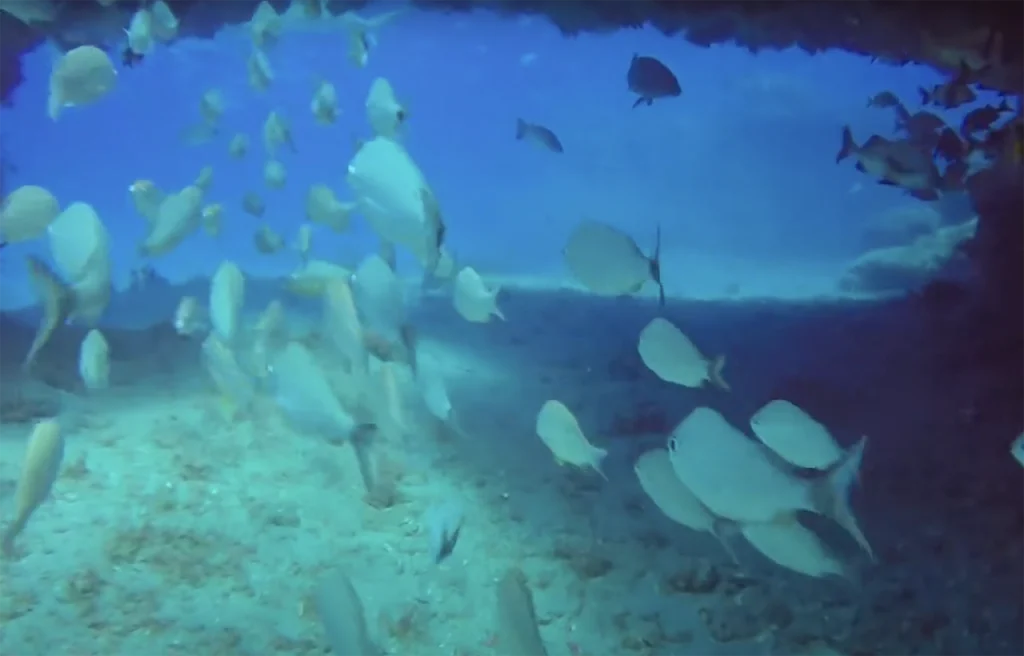
Maximizing Your Diving Experience at the Tunnels
Timing Your Dive
- Choose Optimal Conditions: The visibility and current conditions can significantly affect your dive. Aim to dive during times of favorable weather and tide conditions to ensure the best visibility and an enjoyable experience. Early mornings often provide calmer waters, making for a more pleasant dive.
Be Patient and Observant
- Slow Down: Many divers emphasize the importance of patience at Tunnels. Instead of rushing through the dive, take your time to explore the area thoroughly. Scanning both east and west from the ledge can reveal hidden marine life that you might otherwise miss.
Explore Key Areas
- Swim-Through Tunnel: Make sure to take advantage of the iconic swim-through tunnel, where you can encounter various marine species such as Goliath groupers and reef sharks. This unique feature is a highlight of the dive.
- The Donut Hole: Don’t miss “the Donut,” a section known for its congregation of Caribbean reef sharks. Spending time here can lead to thrilling encounters with these magnificent creatures.
Engage with Dive Operators
- Choose Reputable Operators: Select a dive operator known for their professionalism and safety measures, such as Jupiter Dive Center or Kyalami Charters. Experienced guides can provide valuable insights about the site and help maximize your diving experience.
Prepare for Wildlife Encounters
- Stay Calm and Still: When encountering larger marine life, such as sharks or Goliath groupers, remain calm and still to avoid startling them. This approach increases your chances of observing these creatures up close.
- Look for Hidden Gems: Keep an eye out for less conspicuous species like moray eels or batfish that may be hiding among the rocks or sand.
Safety First
- Quick Entry and Descent: When instructed to “dive dive dive,” make a quick yet safe entry into the water. This technique, known as a “hot drop,” targets specific areas rich in marine life right from the start of your dive.
Capturing Memories at the Tunnels: Photography Tips
Choose the Right Equipment
- Wide-Angle Lenses: Use a fisheye or rectilinear wide-angle lens to capture large marine life like Goliath groupers and sharks up close. A fisheye zoom lens is particularly effective for dynamic encounters, as it allows for flexibility in framing your shots.
- Strobes and Lighting: Position your strobes high and wide to reduce backscatter, especially in sandy areas. This helps illuminate your subject while minimizing particles in the water that can obscure your images (6).
Master Your Diving Skills
- Neutral Buoyancy: Perfect your buoyancy control to avoid disturbing the environment or kicking up sediment. Being stable in the water allows you to focus on capturing sharp images without causing disruptions.
- Streamlined Gear: Keep your dive gear streamlined to move efficiently through currents and avoid missing fast-moving subjects.
Get Close to Your Subject
- Proximity Matters: Water reduces color and clarity, so aim to get within 12 inches of your subject. This minimizes the amount of water between your lens and the subject, enhancing image quality.
- Stay Calm: Relaxation is key when photographing marine life, especially sharks. If you remain calm and still, you’ll often find that curious animals will approach you, providing excellent photo opportunities.
Utilize Natural Light and Composition Techniques
- Shooting Angles: For dynamic compositions, shoot at upward angles against surface light. This technique can create a more natural look and add depth to your images (5).
- Focus on Composition: Avoid centering your subject; instead, fill the frame with it and ensure its eyes are in focus. Consider using foreground elements for added interest in your shots.
Adjust Your Camera Settings
- White Balance: Adjust your camera’s white balance settings to account for color distortion caused by water depth. Using manual white balance can help restore natural colors in your images.
- Flash Settings: Ensure your camera flash is activated, preferably in “forced flash mode,” to enhance illumination in deeper waters where natural light is limited.
Capture Images During Ascent
- Consider taking photos while ascending slightly to limit sediment disturbance. This technique helps maintain clarity in your shots while allowing you to capture unique perspectives of marine life as they swim by.
Frequently Asked Questions
When is the best time to dive the Tunnels
The ideal time to dive the Tunnels site in Jupiter is primarily influenced by water conditions, marine life activity, and seasonal factors.
Seasonal HighlightsMid-August to September: This period is particularly recommended for diving at Tunnels due to the annual Goliath grouper aggregation. During this time, divers can witness large numbers of Goliath groupers congregating in the area, making it one of the best times for encounters with these impressive fish.
Weather and Water ConditionsCalm Seas and Good Visibility: The best diving conditions occur when seas are calm, which typically happens during late spring and early fall. Divers should aim for days with low winds and minimal wave action to enhance visibility, which can otherwise be affected by currents and tides.
Tide ConsiderationsTiming with Tides: The dive site is close to Jupiter Inlet, meaning that tides can significantly impact visibility and current strength. It’s advisable to dive during slack tide when currents are weaker, allowing for a more enjoyable experience.
Water TemperatureComfortable Temperatures: Water temperatures in Jupiter typically range from the mid-70s to low 80s Fahrenheit (about 24-29°C) throughout the year, making it comfortable for diving. However, summer months often provide the warmest conditions.
What is the visibility like while diving the Tunnels
Visibility at the Tunnels dive site in Jupiter can vary significantly based on several factors, including tides, currents, and weather conditions.
Typical Visibility RangeVisibility at the Tunnels site typically ranges from 10 to 25 meters (approximately 30 to 80 feet) depending on the time of year and conditions. On good days, divers often report excellent visibility, which enhances the overall diving experience and allows for clearer observation of marine life and underwater features.
Influencing FactorsTides and Currents: The proximity of the Tunnels site to Jupiter Inlet means that visibility can be affected by strong currents and tidal changes. During periods of strong current, visibility may decrease as sediment is stirred up.
Weather Conditions: Wind and wave direction can also impact visibility. Calm weather conditions generally lead to better visibility, while rough seas can reduce clarity.
Seasonal VariationsVisibility can fluctuate throughout the year, with some seasons offering clearer conditions than others. For example, summer months often provide warmer water and potentially better visibility, while winter may see more variability due to weather patterns.
Recommendations for DiversTo maximize visibility during dives at Tunnels, it is advisable to check with local dive operators for real-time assessments of conditions before diving. They can provide updates on current visibility and recommend optimal dive times based on tidal schedules and weather forecasts.
How deep are the dives at the Tunnels
Diving at the Tunnels site in Jupiter, Florida, typically occurs at depths ranging from 65 to 76 feet (approximately 20 to 23 meters). The average depth reported is around 24 meters(about 79 feet) according to various sources. Some divers have noted that the maximum depth can reach up to 76 feet in certain areas, particularly near the sandy bottom of the dive site.
Is the Tunnels site in Jupiter suitable for beginners?
The Tunnels dive site in Jupiter, Florida, can be suitable for beginners, but there are several factors to consider:
Depth and Conditions
Depth: The dives at Tunnels typically range from 65 to 76 feet (approximately 20 to 23 meters). While this depth is manageable for certified divers, beginners should ensure they are comfortable with deeper dives.
Current and Visibility: The site is located near Jupiter Inlet, which can sometimes lead to strong currents that may be challenging for novice divers. Visibility can also vary based on tides and weather conditions, impacting the overall experience. It’s advisable for beginners to dive during slack tide when currents are weaker.
Training and Experience
Certification Level: Beginners should ideally have at least an Open Water certification. Some dive operators may require additional experience or a guided dive with an instructor for those who are less experienced.
Guided Dives: Many local dive shops, such as Jupiter Dive Center and Jupiter Scuba Diving, offer guided dives tailored for beginners. These guided experiences can provide valuable support and enhance safety while exploring the site.
Recommendations
Dive with a Buddy or Instructor: New divers should always dive with a buddy or under the supervision of a qualified instructor. This ensures safety and provides assistance in navigating the underwater environment.
Plan Ahead: It’s important to check with dive operators about current conditions and recommendations for beginner divers before planning a dive at Tunnels.
Is the Tunnels dive site in Jupiter suitable for advanced divers?
The Tunnels dive site in Jupiter, Florida, is indeed suitable for advanced divers, and here are several reasons why:
Challenging Conditions
The site is located near Jupiter Inlet, which can lead to variable currents and visibility conditions. Advanced divers are better equipped to handle these challenges, as they possess the skills necessary to navigate strong currents and adapt to changing underwater environments.
Depth and Dive Profile
The dives at Tunnels typically reach depths of 65 to 76 feet (approximately 20 to 23 meters). This depth is well within the recreational limits for advanced divers, allowing them to explore deeper areas while observing large marine life such as Goliath groupers and various shark species.
Rich Marine Life
Advanced divers often appreciate the opportunity to encounter a wide variety of marine species, including Caribbean reef sharks, eagle rays, and even rare sightings like sawfish. The chance to observe these creatures in their natural habitat adds excitement and value for experienced divers.
Unique Features
The Tunnels site features swim-throughs and ledges that require a certain level of diving proficiency to navigate safely. Advanced divers can fully enjoy these unique underwater structures while employing their skills in buoyancy control and navigation.
Patience and Observation
The dive experience at Tunnels rewards those who are patient and observant. Advanced divers are often more adept at scanning the environment for marine life and can take their time to fully appreciate the dive site without rushing through it.
Jupiter Dive Sites
- Area 51
- Area 29
- Tunnels
- Loggerhead Reef
- Bluffs Reef
- Bonnies
- Captain Kurls
- Spadefish Point
- Coral Cove Park
- Captain Mike’s
- Julies
- Emerald Charters Shark Dive
- Jupiter Wreck Trek
- Donut
- Scarface Reef Andrew “Red” Harris No Shoes Reef
- Jupiter Inlet
- Step Reef
- Sawfish Bay
- Marine Restoration Reef
- North County Reef
- Lighthouse
- Finz Den
- High Ledge
- Leigh’s Ledge
- Monkey’s Ledge
- Gary’s


